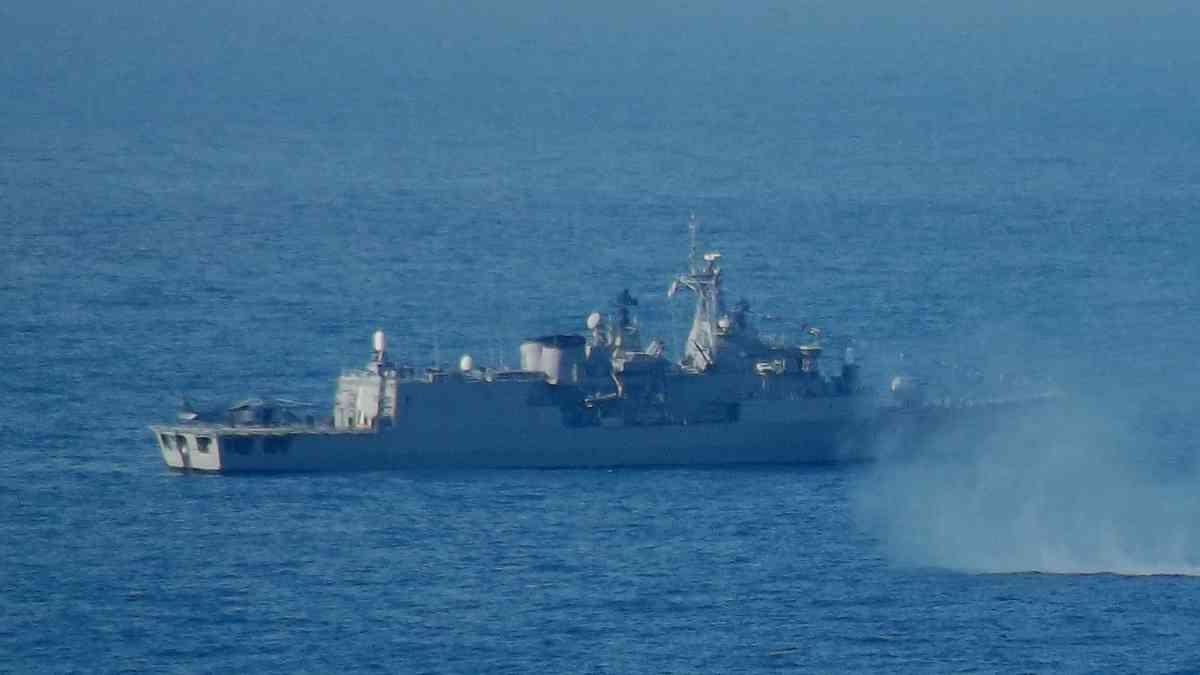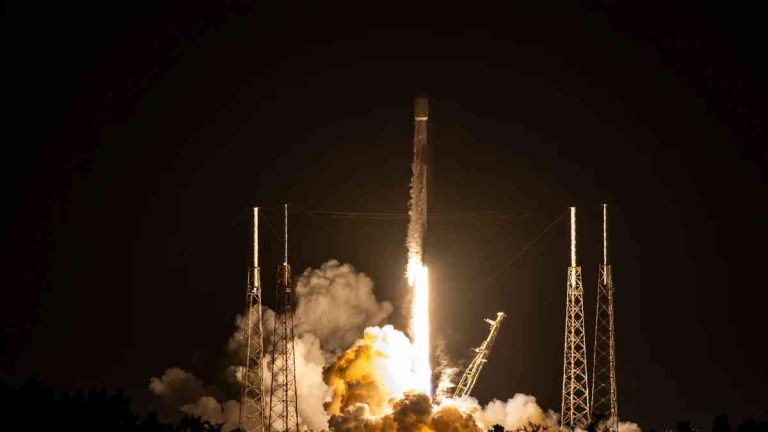In a world where transnational pressures are frequently as changeable as rainfall, recent developments in the Red Sea region have raised eyebrows and transferred shockwaves across global requests. The story begins with the Iranian Alborz warship’s mysterious entry into the Red Sea, which has burned a geopolitical greasepaint cask amidst rising conflicts and maritime security enterprises.
The Alborz, a redoubtable vessel belonging to Iran’s nonmilitary line, has ventured into the Red Sea, as reported by the semi-official Tasnim news agency. This move comes at a time of heightened pressures along the pivotal shipping route, driven by ongoing conflicts in the region and adding attacks on vessels with suspected ties to Tehran.
While details regarding Alborz’s specific charge remain shrouded in secretiveness, the Iranian government asserts that its warships have patrolled open waters since 2009. These deployments serve a multifaceted purpose, including securing shipping routes, combating pirating, and executing colourful other strategic tasks.
The stewing conflict in the Red Sea cannot be bandied without addressing the part of Yemen’s Iran-backed Houthi revolutionists. Since November, these mutineers have been relentlessly targeting vessels in the Red Sea, presumably in a show of solidarity with the Palestinian group Hamas in its ongoing conflict with Israel.
The situation escalated dramatically when the U.S. service verified its forces opened fire on Houthi revolutionists who attacked a weight boat in the Red Sea. The clash resulted in casualties among the Houthi ranks, leading to a stern statement from a White House functionary, who emphasized the U.S.’s commitment to tone-defense in the region.
The UK’s Station On Military Action
Across the Atlantic, the United Kingdom has not remained silent on the matter. Grant Shipps, the Secretary of State for Defence, blazoned that the UK is meaning airstrikes against the Houthi group. His statement underlined the UK’s readiness to take direct action to cover freedom of navigation in the Red Sea.
This position was echoed in a Telegraph report revealing that the UK and the U.S. are collaboratively developing strategies for implicit military strikes against the Houthis. likewise, reports are suggesting that the USS Gerald Ford aircraft carrier is en route to the Mediterranean, indicating a potentially robust transnational response to the extremity.
Pressure On Iran
In a political move, Foreign Secretary David Cameron engaged with his Iranian counterpart Hossein Amir-Abdollahian, holding Tehran responsible for quelling Houthi attacks. The transnational community is nearly covering Iran’s conduct and responses to the growing extremity.
The impacts of recent Houthi attacks have gurgled through the shipping assiduity, leading numerous major companies to conclude for the longer and premium route around Africa’s Cape of Good Hope rather than the Suez Canal. This decision, while economically burdensome, demonstrates the inflexibility of the situation and its impact on global trade, given that the Suez Canal handles roughly 12 per cent of worldwide shipping.
The Alborz’s Red Sea Entry
The exact timing of the Alborz warship’s entry into the Red Sea remains uncertain, with unconfirmed reports circulating on social media suggesting it arrived late on a cataclysmal Saturday. The Tasnim report provides precious sapience, stating that the boat penetrated the Red Sea via the Bab al-Mandab Strait.
The report highlights the broader environment, emphasizing the fleetly evolving developments in the Gulf of Aden and the Bab al-Mandeb Strait, which have been aggravated by rising pressures in the Gaza conflict.
The Alborz, belonging to the Alvand class destroyer, has a fabled history within the Iranian cortege. As part of the 34th line, alongside the Bushehr support vessel, it has patrolled the Gulf of Aden, the north of the Indian Ocean, and the Bab Al-Mandab Strait as far back as 2015.
The U.S. Fifth Fleet abstained from opining on the unconfirmed reports regarding the Alborz’s movements, maintaining a sanctioned station of non-interference in the Iranian Navy’s conditioning. Recent events in the Red Sea include an enterprising hassle involving the USS Gravely destroyer.
The boat’s crew baffled two anti-ship ballistic dumdums fired at the Singapore-flagged Maersk Hangzhou on a cataclysmal Saturday evening. In response to a bullet strike, the crew acted fleetly, guarding the vessel and its crew.
The following day, four small boats launched an attack on the same-weight boat using small arms fire. The U.S. Navy responded, with copters from the USS Dwight. Eisenhower aircraft carrier joining the fray. Verbal warnings were issued to the bushwhackers, but they responded with gunfire.
The Houthi revolutionists conceded the loss of ten fighters during the battle and issued warnings of implicit consequences. Amidst this complex situation, the White House National Security Council remains conservative about the possibility of preemptive strikes to guard marketable shipping in this vital raceway.
Global Ramifications Oil Painting Prices Launch
The transnational community isn’t the only one keeping a vigilant eye on these developments. The global oil painting request has replied fleetly to the news of the Alborz’s entry into the Red Sea. Oil painting prices surged, transferring shockwaves through the assiduity.
The Standard Brent Crude
Oil painting price jumped by 2.5, reaching $ 78.97 per barrel, while the U.S. West Texas Intermediate also gained 2.5, climbing to$73.43 per barrel during Asian trading hours. The oil painting request’s response underscores the significance of events in the Red Sea region, a critical raceway for global shipments that has lately been agonized by Houthi revolutionary attacks.
The maritime assiduity has not been spared from the ripples of this geopolitical turbulence. Major shipping companies have been forced to review their routes in light of the rising pressures in the Red Sea. Numerous have chosen the longer and more precious trip around Africa’s Cape of Good Hope, where ocean freight rates have reached stunning heights, peaking at 10,000$ per vessel.

German vessel shipper Hapag-Lloyd, among others, decided to divert vessels down from the Suez Canal and Red Sea routes. Still, there’s a hint of a stopgap for the assiduity with the launch of Operation Prosperity Guardian, a transnational maritime force by the U.S. This action has boosted the confidence of shipping companies, with Danish shipping mammoth Maersk publicizing its intention to renew operations in the Red Sea and the Gulf of Aden.
The Red Sea A Strategic Chokepoint
The Red Sea, frequently appertained to as a strategic chokepoint, holds immense significance in global geopolitics and commerce. Its geographical position serves as a ground between the Mediterranean Sea and the Indian Ocean, making it a vital conveyance route for maritime trade. This region connects Europe, Asia, and Africa, easing the movement of goods, energy coffers, and military means.
The escalation of pressures and the presence of Iranian warships in this pivotal raceway have raised enterprises about the dislocation of global trade overflows. Any disturbance in the Red Sea has the implicit to ripple through the world frugality, affecting diligence far beyond the maritime sector.
Oil painting requests are Vulnerable to dislocation
One of the immediate impacts of the Red Sea extremity has been the swell in oil painting prices. The global frugality heavily relies on the steady inflow of oil painting from the Middle East to fuel diligence, transportation, and power generation. The Red Sea serves as a conduit for a significant portion of the world’s oil painting force, making it a hotspot for energy security.
The rise in oil painting prices, touched off by the pressure in the Red Sea, can have far-reaching consequences. It places a fresh burden on consumers, raising the cost of living and potentially decelerating profitable growth. Also, diligence that heavily depends on oil painting, similar to aeronautics and logistics, may face increased functional costs, which could be passed on to consumers.
Maritime security is another critical aspect affected by the Iranian warship’s presence in the Red Sea. The increased demilitarization of this region and the clashes between non-military forces raise questions about the safety of marketable vessels and their crews. Ship owners are scuffling with the decision to navigate through potentially dangerous waters or take longer, premium routes to ensure the safety of their means.
Pirating, which was formerly a significant concern in the waters girding the Horn of Africa, could resurface if security measures aren’t robustly executed. The vulnerability of ships in the Red Sea has been highlighted by the recent Houthi assaults, which have increased concerns about marine assiduity.
The Iranian warship’s foray into the Red Sea has sparked a geopolitical chess match in the region. The fact that the US, UK, and other significant foreign powers are involved shows how complicated the situation is. While the U.S. has a longstanding interest in securing freedom of navigation and guarding its abettors, Iran’s strategic intentions in the region further complicate matters.
The collaboration between the U.S. and the UK on implicit military conduct against the Houthi revolutionists indicates a united front against pitfalls to transnational maritime security. Still, this alignment isn’t without challenges, as it could strain political relations and enkindle further pressures on Iran.
The Philanthropic Risk Yemen’s Suffering
Amid the geopolitical manoeuvring and profitable considerations, it’s essential not to lose sight of the mortal suffering in Yemen. The ongoing conflict, with the Houthi revolutionists at its centre, has redounded in a ruinous philanthropic extremity. Millions of Yemeni civilians are in dire need of food, clean water, and medical backing. The conflict has displaced numerous families and led to a severe lack of access to introductory musts.
The transnational community must balance its sweat to secure maritime routes with a commitment to ease the suffering in Yemen. Philanthropic aid associations face challenges in delivering backing to those in need due to the unstable security situation.
A Way Forward Diplomacy And Resolution
Amid this multifaceted extremity, tactfulness remains vital tool for chancing a peaceful resolution. It’s pivotal for all parties involved to engage in meaningful dialogue and concession to lessen pressures and ensure the safety of maritime business in the Red Sea.
Sweats should be concentrated on establishing a frame for maritime security, inhibiting pirating, and furnishing philanthropic backing to Yemen. Multilateral tactfulness, involving indigenous stakeholders and global powers, can help agree on the way forward.
As the Iranian Alborz warship details the Red Sea, transnational pressures remain on a cutter’s edge. The delicate balance in this critical raceway affects global trade, oil painting prices, and maritime assiduity. The world watches closely, hoping for a peaceful resolution to the conflict while preparing for all possible issues. Amid this query, one thing is clear the Red Sea remains a focal point of global attention, where geopolitics and commerce intersect in a complex and ever-evolving geography.






















+ There are no comments
Add yours